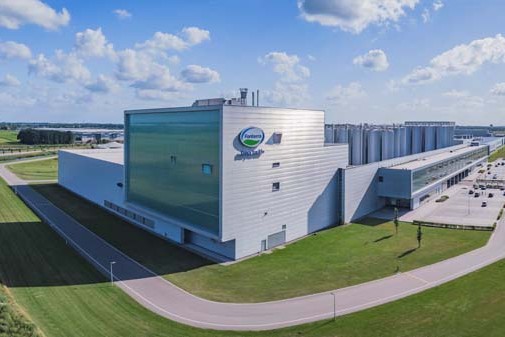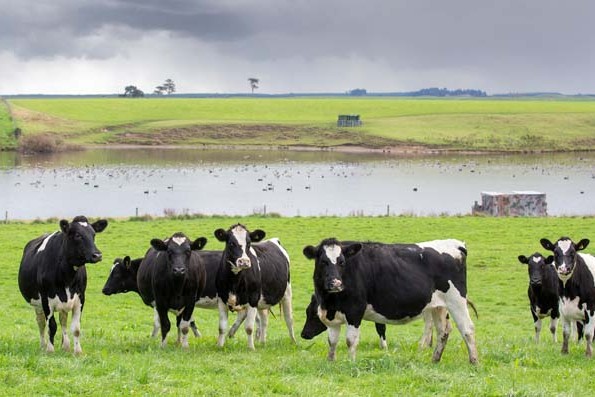By Phil Edmonds
Concerns affecting farmer confidence over the past year have tended to focus on the prospect of more environmental regulation, tighter bank lending conditions and subdued farm prices. But bubbling under these fear-inducing issues has been an escalation in farm expense inflation – ahead of consumer price inflation – and economists are picking it will likely increase further this year.
ANZ rural economist Susan Kilsby noted in the bank’s AgriFocus update at the end of last year that farm operating costs have lifted nearly twice as much as the general rate of inflation. Data from StatsNZ’s Farm Expenses Price Index, updated quarterly, increased by 5.9% in the two years to September 2019. This compares somewhat unfavourably with the Consumer Price Index (CPI) rising 3.4% for the same period. When considering the range of influences on farmer confidence, the bank signalled costs of production should increase again in the future.
A similar view was expressed by ASB senior rural economist Nathan Penny in November. He too said annual farm input price inflation would rise.
Somewhat surprisingly – at least for those faced with paying higher prices for operational necessities – not much further consideration has been made on the impact this could have. So should rising input prices be considered as significant as the missed heartbeats you’re feeling when paying those bills suggest?
The answer might lie predictably enough somewhere between yes and no.
First, price inflation can’t simply be considered in isolation. When prices rise, something else is usually causing it. Penny says onfarm inflation is usually fairly closely linked to the milk price. As the milk price rises, so does the temptation to spend more on inputs to capitalise on the higher prices, and with that extra demand, prices for key inputs inevitably increase.
“Generally the main driver of onfarm inflation is feed costs. So as the milk price is lifting – it was $6.35kg milksolids (MS) last year and looking like $7 something this year – feed costs should increase.”
According to the StatsNZ Farm Expense Price Index the combination of expenses comprising grazing, cultivation, harvest and purchase of animal feed increased 9.4% in the two years to September 2019. Penny suggests any change to that trend is unlikely.
“In terms of bought-in feed, we have data on grain prices, and they are comfortably above the 10-year average at the moment, and I wouldn’t expect that to change this year.”
Given the significance of feed costs to overall farm expenses, the weather can also be considered as a driver of inflation, at least on a season-to-season basis. If the summer and autumn deliver conditions which increase demand for bought-in feed this could well lift prices. Current dry conditions in Northland and potentially elsewhere may well contribute to this.
Over the whole country however, the biggest influence will remain the milk price.
“My view is that as farmers increasingly see the cash from the milk price flow through, and as they get more confident it is going to be a $7-something, nearer autumn where there’s that production shoulder, they’ll be tempted to fill the shoulder in with a bit more feed,” Penny said.
While that is going to increase overall spend, it will have an impact on unit costs. Penny says that while prices might not escalate beyond expectations, they are moving above what they are now.
To be clear, dairy farmers are not alone in observing higher prices.
Beef & Lamb NZ’s New Season Outlook for 2019-20, published in October, noted total expenditure for all classes of sheep and beef farm is expected to increase this year.
“Inflation in prices for inputs used on sheep and beef farms is estimated at 2.8% in 2019-20, following farm input inflation of 2.0% in 2017-18 and 3.0% in 2018-19, both due to price rises across all farm inputs.”
While the sector is not as exposed as dairy is to short-term price inflation pressures, the projected increases on expense items remains well ahead of the CPI, which for 2020 is now thought to be around 1.8%.
Earlier last year Beef & Lamb NZ’s annual On-Farm Inflation Report noted that excluding interest, on-farm inflation was 3.5%, the highest rate since the 2011-12 season. In contrast, the CPI was 1.5% in the year to March 2019.
‘In terms of bought-in feed, we have data on grain prices, and they are comfortably above the 10-year average at the moment, and I wouldn’t expect that to change this year.’
So far, so grim. But it is worth considering the difference between short-term pressures on prices compared to longer-term drivers, and the way the cyclical nature of agricultural production and commodity prices plays a key role in changes to on-farm inflation.
It will be no surprise to most, and is quite evident in the projections identified above, that we are seeing the pendulum swinging up.
DairyNZ reports somewhat belatedly each year in May on farm expense inflation from the previous season in its Economic Surveys, and last year confirmed that prior to the 2017-18 season average prices for inputs had remained nearly unchanged after three seasons. It also said that if interest is removed, underlying dairy farm input prices increased 1.3% on average over the ten years to 2019, less than the general rate of inflation, which was 1.6% per year.
However, it noted that trend is changing. For 2017-18 the largest increase in spending was in feed, repairs, maintenance and labour. It also said it is likely expenditure had increased further in 2018-19, which contributed to the overall break-even milk price increasing 70 cents to $5.87kg of milksolids. DairyNZ’s current break-even milk price has since been revised up to $5.95.
Most farmers will have recognised higher costs associated with repairs and maintenance over the past year. The Farm Expenses Price Index recorded repairs and maintenance costs increased 8.1% for the two years to September 2019.
The increase in total expenditure can be partly attributed to farmers playing catch up on deferred maintenance in the low payout years. A three-fold increase in spending on repairs compared to the seasons with depressed prices won’t have been uncommon. This will have inevitably pushed up unit prices, with heavier demand for contracted services.
An additional driver of maintenance cost increases for dairy farmers (at least in some regions) is the greater incidence of large-scale improvements in effluent management. The fact that there’s a lot of new effluent ponds going in, means the likes of bulldozers and digger contractors are all really busy and are able to adjust their prices accordingly.
While not explicitly acknowledged, it reflects the wider farm servicing industry’s attitude to their own pricing strategies. In the low payout years they were forced to moderate their own prices to maintain their competitiveness, and just as farmers are spending more with rising incomes, servicing firms are taking the opportunity to catch up on perceived lost ground.
In terms of those onfarm expenses that have longer-term influences on inflation, labour costs can clearly be identified as having driven up overall costs in the past ten years, and increasingly so in more recent years.
Penny said there isn’t a lot of current inflationary pressure from wages in the wider economy, but the costs associated with employment in the primary sector have certainly risen.
“The issue is more about finding and keeping good staff rather than wages per se. This includes costs like improving job attractiveness with better housing. The direct impact of wages isn’t that great but the costs creep in other ways.”
This was confirmed by one farmer who said his wage bill had increased 50% in five years, based on two drivers – first to attract anyone in the first place you have to make the pay and conditions attractive, and then to keep quality staff you need to pay them more every year.
Onfarm wages and salaries increased 3.6% in the two years to September 2019. Shearing costs are worth noting in this context – they increased 12.8%, which Beef & Lamb NZ said was attributed to rising pay rates for shearing contractors.
The most topical influence on farm expense inflation, however, is compliance costs.
There’s no doubt pressure has emerged with rising costs associated with running a farm, and indeed are only likely to increase. “There’s been creep in compliance costs over the past few years, and in a way these costs are increasingly part of farmers underlying expense base now. Things like health and safety are already built into farmers’ base expenditure to a degree,” Penny said.

“When we look forward there are all the other things coming in, for example the cost estimates associated with water regulation. That looks to be the key one, compared with carbon which will be quite small.”
The cost of environmental compliance is already showing up in other line items. For dairy farmers for example, new rules about milk chilling and cooling has led to bigger electricity bills, up as much as 50% in the last two years, partly due to the cost of running new cooling units.
Looking further out, a Rabobank report released in January on dairy land values over the next five years projects operational and compliance costs to rise further, especially so for farms in regions with challenging land and water plans.
The other bone of farmers’ contention on compliance-oriented expenses remains local government rating. At the end of last year Federated Farmers reiterated its desire to see local government funding and financing overhauled, which President Katie Milne said means farmers continue to pay a disproportionate share of the burden. The over-reliance on a property-value based rating system means there is no correlation between rates paid and services used, and this has seen rates rise well ahead of general inflation.
All that said, we need to come back to the impact farm expense price inflation has on output prices – that is, what happens to the milk price when farmers react to higher costs.
“Anything that puts farmers’ costs up generally limits production growth, and anything that limits production growth tends to put downward limits on the milk price – ie: we get a higher milk price,” Penny said.
In relation to that, the compliance costs faced by NZ farmers are not unique to them.
“Competitors offshore are facing very similar challenges, which means there’s upward pressure on the milk price in other countries as well, and then it becomes a competitive question. If we can incorporate those compliance costs into our systems more efficiently than our competitors, then that is going to be to our advantage.
“I encourage farmers to think about that, because at the end of the day, yes, farmers costs are going to be higher, but if they find some efficiencies that means those cost increases are lower than their off-shore competitors, it will mean they get to keep more of the increase in the milk price.”
Perhaps the key measure of the impact of farm expense inflation then is changes to farmers’ margins.
“I’d agree that cost bases have gone up, so to make the same return, you need a higher price on the milk or meat you produce. I suggest that the margins probably haven’t changed that much. At $7.00/kg MS, the milk price is enough for a good farmer to make a good return despite cost creep,” Penny said.
We’ll leave the last words to the Reserve Bank, the statuted authority on inflation and economic forecasting.
In the bank’s most recent Financial Stability Report published in November it showed the familiar (albeit moderating) concern with dairy debt as a potential handbrake on the economy but did not mention operating costs as a pressure on farm incomes. The issues raised around the ability of the sector to address its debt focused on new lending restrictions and improving incomes. It said reasonable dairy prices have reduced the need for some farms to borrow to cover operating costs.”
There was one reference to the now well-identified potential for increases in environmental compliance costs, but the bank did not consider this as a pre-eminent concern.
The takeaway on farm expense inflation then might be summarised as equal parts reassuring and frustrating – you earn more, you pay more.





